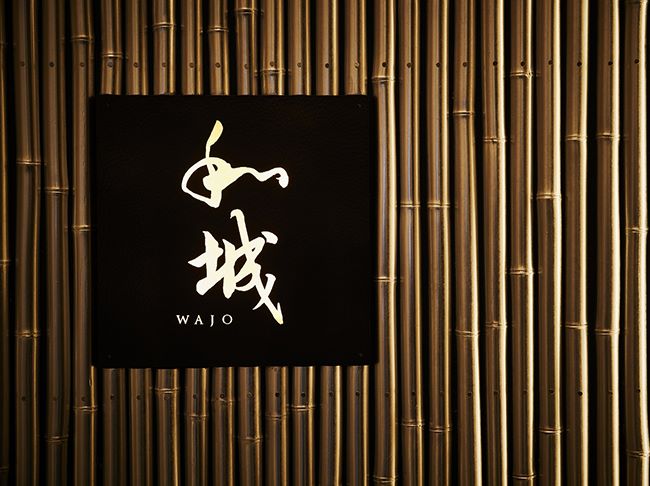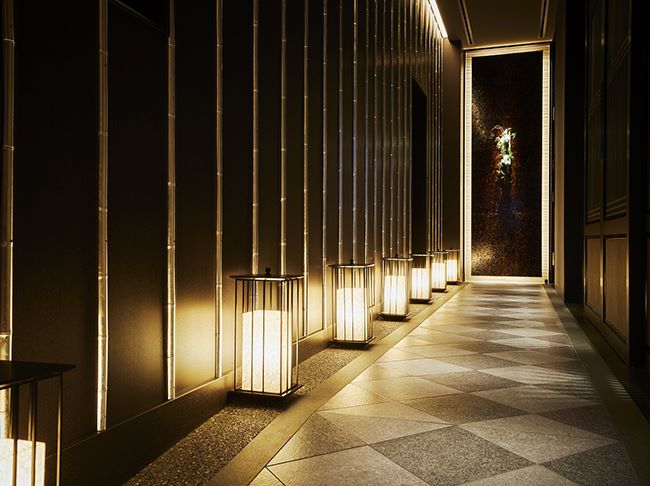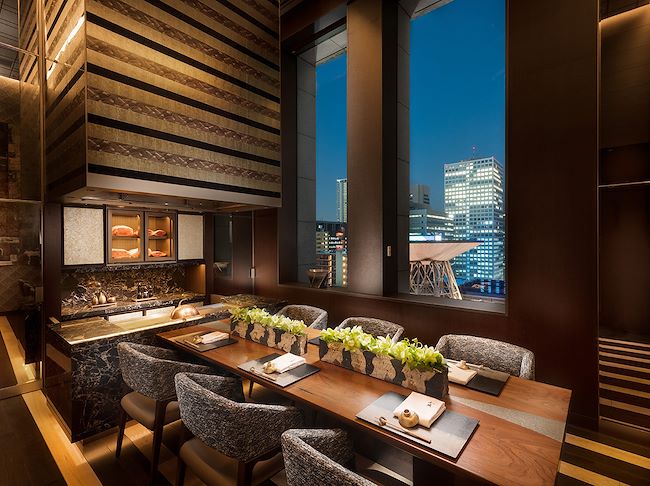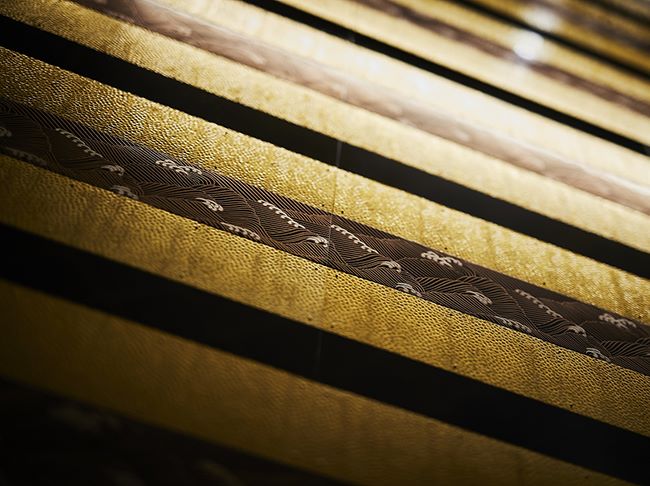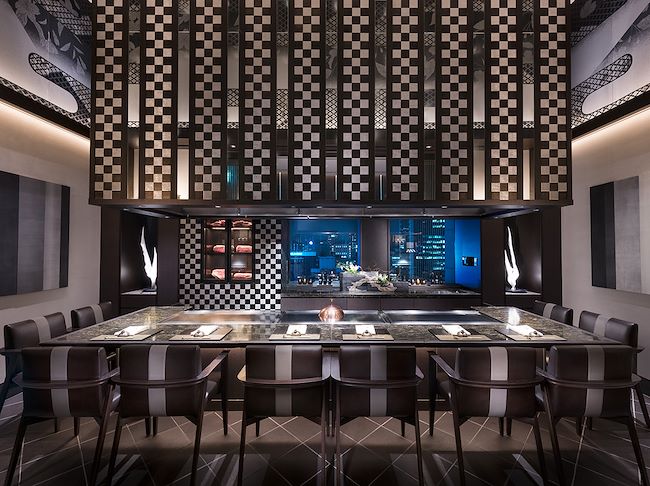A traditional Japanese space redolent of the Azuchi–Momoyama period
The interior of Teppanyaki Wajo follows the design concept of The St. Regis Osaka, incorporating the culture, styles, and motifs of the Azuchi-Momoyama period. This was a period when Japan opened its doors to the outside world, and is characterized by luxury, splendor, and energy—it was a culture that overflowed with innovation. The tea ceremony and its associated architecture, which were perfected during this period, are reflected in the interior design of Teppanyaki Wajo.
The restaurant is divided into two dining areas. The Soan Private Dining Room is inspired by "Daimyo-cha," a form of tea ceremony practiced by the Daimyo of the Azuchi-Momoyama period, and by the Golden Tea Room of Toyotomi Hideyoshi. Modeled on the "wabi-cha" concept of tea master Sen no Rikyu, the Taian Communal Dining Room is distinctive for its simplicity and quietness.
Constructed using traditional Japanese techniques and materials, these dining areas are meticulously designed, with great attention paid to every detail. They promise a dining experience that is both intensely stimulating and rich in spirituality.
